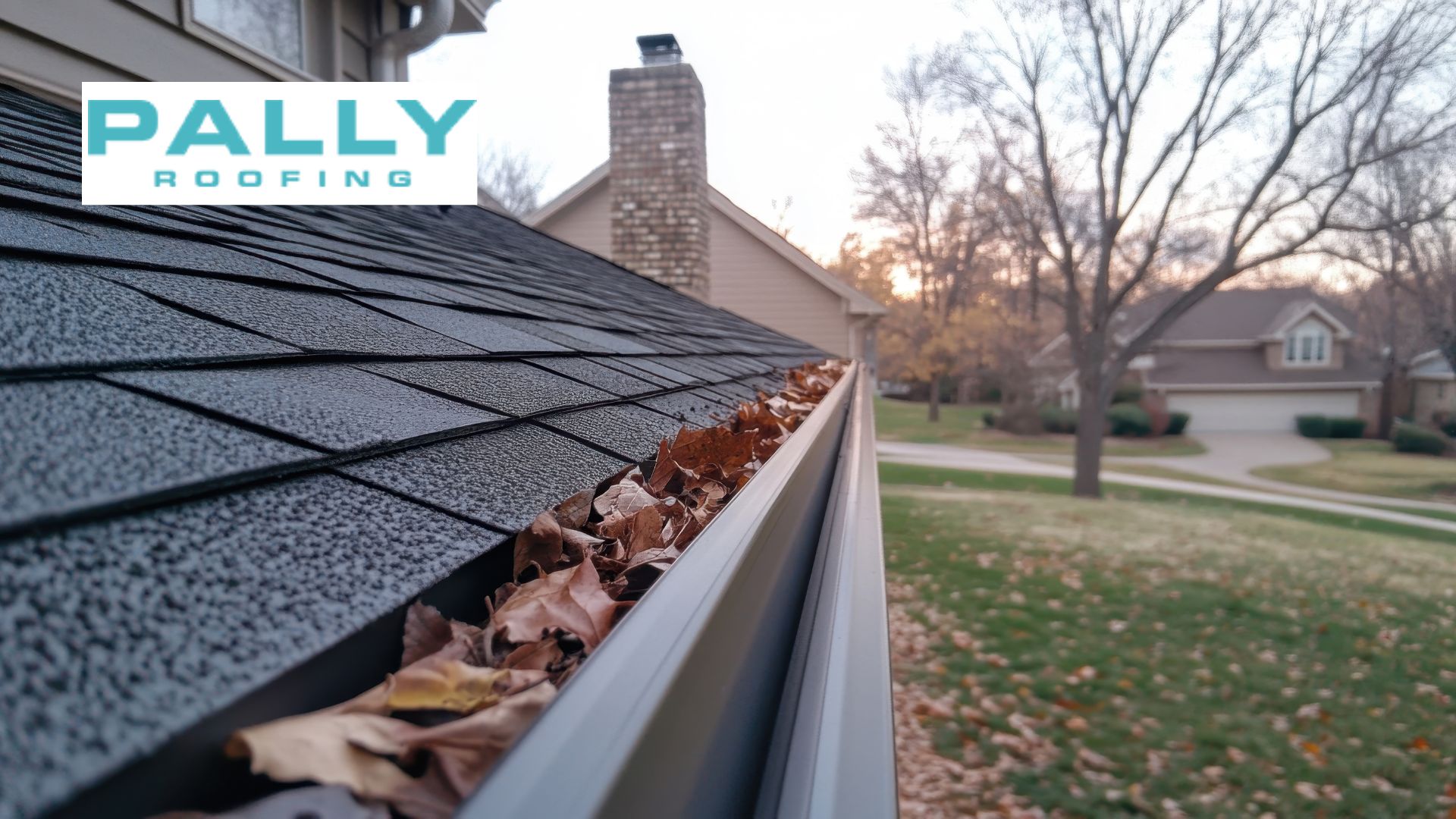Choosing the best roofing is important to ensure reliable protection for your roof. In this guide, we’ll explore synthetic vs felt underlayment and compare their pros and cons so you can choose the best one for your roofing project.
Both materials are barriers that protect your roof area from moisture, water, and debris, but they have unique characteristics, advantages, and disadvantages. Below is a detailed comparison to help you build your house based on the above project decision.
Table of Contents
What is a Roofing Underlayment?

Source: Harlan Roofing
Roofing underlayment is installed directly onto the roof deck before shingles are placed. It provides an additional barrier against moisture, water, and other external elements, enhancing the roof’s durability and performance.
What is Felt Underlayment?
Felt underlayment, or tar paper, is a traditional roofing material made of asphalt-filled fabric. It is commonly used but has some limitations compared to other methods.
Pros of Felt Underlayment:
- Cost-Effective: Felt is generally inexpensive, making it ideal for budget-friendly projects.
- Availability: Available in various weights, including 15-pound and 30-pound options.
- Water Protection: When properly installed, felt underlayment provides reliable water protection.
Cons of Felt Underlayment:
- Durability Issues: Felt roofing underlayment can tear and degrade under extreme weather conditions.
- Heavy Weight: Its weight makes it challenging to handle and install.
- Moisture Absorption: Felt underlayment can absorb water, causing mold or mildew to grow.
What is Synthetic Underlayment?
Synthetic underlayment is made from advanced materials such as polypropylene or polyester, known for their excellent roof durability and full functionality.
Pros of Synthetic Underlayment:
- Superior Durability: Synthetic underlayment for roof durability is tear-resistant and highly suitable for harsh weather conditions.
- Lightweight: Easy to install, reducing labor costs.
- Moisture Resistance: The synthetic materials chosen are highly water resistant, reducing the risk of mold growth.
Cons of Synthetic Underlayment:
- Higher Initial Cost: Although synthetic underlayment costs, its longevity makes it worth the investment.
- Installation Expertise Required: Professional roof underlayment installation is recommended for maximum efficiency.
Performance Comparison: Synthetic vs Felt Roofing Underlayment

Source: Sheffield metals
Cost Considerations
Felt underlayment is more expensive initially but may require frequent replacement due to its short lifespan. Synthetic underlayment can have a high upfront cost but offers excellent stability and cost-effective options, making it cost-effective in the long run.
Choosing the Best Underlayment for Your Roof
When deciding between synthetic vs. felt roofing, consider the following:

Source: Rhoden Roofing
- Climate: Severe weather conditions can compromise the quality of undercoating material due to its excellent durability.
- Roof Type: Your roof design and material requirements will affect your decision.
- Budget: Choose the best material for your roof covering by weighing upfront costs against long-term value.
Why Choose Pally Roofing?
With over 15 years of experience, Pally Roofing specializes in professionally installing synthetic and felt underlayments in Garrettsville and nearby areas of Ohio. We use the highest quality materials and expert craftsmanship to ensure your roof is covered with top protection for a long time.
Main Factors Influencing the Choice Between Synthetic vs Felt Underlayment
When choosing materials for roofing projects, several key factors must be considered to ensure that the roof provides optimum protection and performance. Here are the key factors to weigh:
1. Climate and Weather Conditions
- Moisture Resistance: Synthetic underlayment is best in areas with high humidity or frequent rainfall due to its excellent moisture barrier properties. Unlike felt, which can absorb moisture and promote mold growth, materials are highly resistant to water damage.
- Temperature Extremes: Synthetic underlayments are designed to withstand extreme temperatures, making them ideal for harsh climates. Felt can soften in cold weather, affecting its performance during installation and over time.
2. Durability and Lifespan
- Tear Resistance: Synthetic underlayments are far more resistant to tearing than they feel, making them susceptible to tears when exposed or in strong winds. Other durable materials mean longer periods, typically 25-30 years, while felt has 12-20 years.
- UV Resistance: Synthetic materials generally have UV protection to prevent damage from sun exposure. On the other hand, Felt can degrade under UV rays, reducing its effectiveness over time.
3. Weight and Ease of Installation
- Weight: Synthetic underlayment is much lighter (2-4 pounds per square) than felt (about 15 pounds per square). This simplifies the handling and installation of the underpinning components, reducing labor costs and installation time.
- Installation Complexity: Synthetic underlayment’s lightweight nature makes it easy to install, especially in complex roofing systems that require precise maintenance. However, the fabric can be stiff and shrink when wet due to its weight.
4. Budget Considerations
- Initial Cost: Felt underlayment is typically more affordable upfront, making it an attractive option for budget-conscious homeowners. However, due to their durability, you may need to replace them more frequently, which can increase long-term costs.
- Long-Term Value: While synthetic underlayment has a higher initial cost (50-100% more than felt), its higher durability and lower maintenance requirements make it a good long-term investment for many homeowners.
5. Roofing Material Compatibility
Certain roofing materials can work well with specific coatings. For example, underlayment materials could benefit from heavier shingles for increased stability and durability, while lighter materials could be better protected with fabric.
6. Contractor Expertise
Your roofing contractor’s experience is important in making the right choice. Professionals who know the underlayment can provide valuable insight into local weather conditions, roofing systems, and other project-specific requirements.
Several factors, including climate, durability, cost, and installation ease, must be considered when choosing between synthetic and felt underlayment. While synthetic underlayment typically offers better long-term performance, felt underlayment may be a less budget-friendly option for specific projects. Consider all of these factors and consult a roofing professional to ensure you make the best choice for your roof.
Conclusion
Synthetic and felt underlayment is critical in roof protection, but it generally provides excellent long-term value due to its durability and water resistance.
Whether you need an expert to choose the best underlayment material or expert installation, Pally Roofing is here to help. Contact us today to ensure your roof stands the test of time in Garrettsville and nearby areas of Ohio.
Frequently Asked Questions!
Is Felt Underlayment Better Than Synthetic?
Felt underlayment is a more cost-effective option, but it is less dense and absorbent and can wear out faster than synthetic underlayment. Synthetic underlayment provides excellent durability, tear resistance, waterproofing, and longevity, making it ideal for most roofing projects.
What Is The Best Underlayment For Roofing?
The best roofing underlayment depends on factors like climate, budget, and the type of roofing material used. Synthetic underlayment is best as it is the most durable, water-resistant, and UV-protected. However, underlayment may be appropriate for less demanding situations or budget-conscious homeowners.
Can Synthetic Underlayment Get Rained On?
Yes, synthetic underlayments can be dropped with minimal damage, as they are waterproof and designed to withstand water. However, it is always advisable to minimize the drying time of the material during installation.
Do Roofers Still Use Felt Paper?
Yes, roofers still use felt paper, especially in more budget-conscious projects. Felt remains popular for many due to its affordability. However, synthetic underlayment is becoming increasingly popular due to its superior performance.
What Is The Life Expectancy Of Synthetic Underlayment?
Synthetic underlayment typically has a life expectancy of 25 to 30 years, depending on the quality of the product and environmental conditions. This is much longer than felt underlayment, which lasts around 12 to 20 years.
What Do Roofers Use Instead Of Felt?
Instead of felt, many roofers use synthetic underlayment due to its superior durability and moisture resistance. Other options include rubberized asphalt or peel-and-stick underlayment. Still, artificial is the most common alternative.
Does Synthetic Roof Underlayment Cause Mold?
Synthetic roof underlayment reduces the chances of mold as it resists moisture and doesn’t absorb moisture like felt. However, mold can still grow after prolonged exposure to water.
Is 15 Or 30 lbs. Is Felt Paper Better For Roofing?
30 lb. felt paper is generally better for roofing due to its excellent durability, more substantial materials, and better waterproofing than a lightweight 15 lb. felt paper. However, 15 lb. felt can be used in simple or costly areas—an effective solution.
Will A Roof Leak Without Felt Paper?
Felt paper acts as a second barrier against water and moisture. While it doesn’t need stabilization, roof leaks or water damage can worsen. For a modern roof, synthetic underlayments can often be an excellent alternative to fabric to prevent leaks.
Author
-

With more than 16 years of hands-on experience, Phillip Schmucker is the knowledgeable owner of Pally Roofing. His dedication to superior roofing services has earned him a reputable place in the industry. Phillip also shares his extensive expertise through writing, providing readers with practical tips and professional advice on various roofing topics. Follow him on LinkedIn.
View all posts






